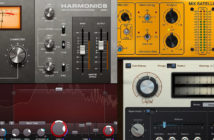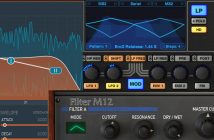1. ‘Imitate That Pro Sound’ Exercise:
Seriously, one of the best uses of your time while learning to mix and produce music is to try and recreate your favourite tracks as closely as possible.
Why does this work so well? It trains you to listen critically, with a definite focus – you may have heard this track hundreds of times, but have you ever listened solely to the bassline pattern, for example: Is it a square- or saw-wave sound? Which frequencies does it mainly occupy? What are the notes, and how do they relate or interplay with the drums, lead riff or chords?
Analysing and imitating everything from the overall structure/arrangement of a track, through programming the same bass or synth tones, to programming the same beat and rhythmic structure, will teach you so much.
I can’t stress enough how actually recreating these patterns and sounds is far more useful than simply listening and thinking, “Yeah, I understand now what that synth part is doing”. It forces you to consider every possible detail, and gives you many ideas and experience of specific techniques that you can translate into your own original tracks.
The other great thing about this sort of exercise is it allows you to completely get into the groove of your analytical, left brain: with the creative choices having been made for you by the original artist, you can concentrate solely on being logical, rational, technical and linear to deconstruct, analyse and rebuild with all your attention. It’s an example of another of the 10 Principles: Balancing the Left and Right Brains, using a systematic approach for optimum efficiency.
2. Inspiration:
You can use reference tracks as ‘psych music’, to get you in the right mood just before you begin producing or mixing, and to remind you of what you’re trying to achieve (another Principle: Great Focus).
I find such tracks are also really useful when you hit a creative cul-de-sac halfway through your own production: rather than slogging through, trying to find a solution to a mix problem on your own, go back to your reference tracks and see if the solution is demonstrated there. It’s the next best thing to having a production mentor in the room with you.
3. Final mix reference:
Once your track is done and you’ve got it sounding as good as you possibly can… compare it to one of your reference tracks, make some notes on the differences between them, and go back for one last round of tweaks and improvements.
This step is most useful for checking the more technical rather than the arrangement or artistic aspects of your mix (which should have been sorted out long before this point… :) ). Things to look out for would be the balance of high, low and mid frequencies, and the relative levels between parts in the mix.
In a future post I’ll be looking in more detail at analysing your final mixes, and correcting common problems or mistakes.
4. Get a feel for unfamiliar environments or gear:
In the live music field, every experienced mix engineer will have a few reference tracks that they take on every job – no matter what kind of space they’re setting up in, they can put one of these tracks over the PA and immediately deduce what the unique characteristics of the space are, and therefore what adjustments needs to be made to the system, based on their experience of how that track should ideally sound.
This applies for every studio producer or engineer too, who is working in an unfamiliar environment, or choosing new equipment such as monitors: play something you know intimately to deduce what the listening environment or monitors are doing, and take this into account as you record or mix, until you’re more familiar.
In Part 2 we’ll take a look at the 7 Steps To Selecting The Best Reference Tracks >>




